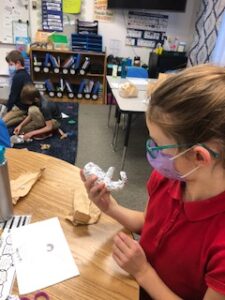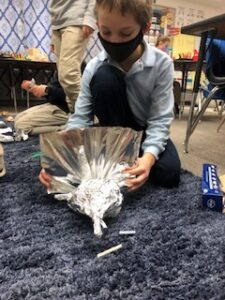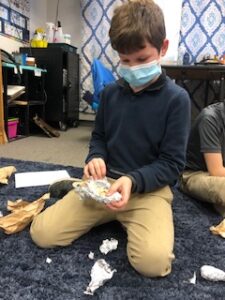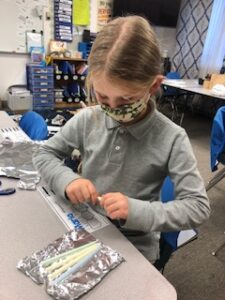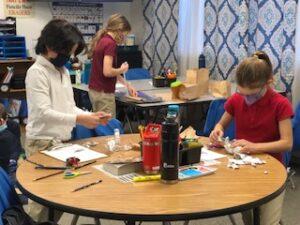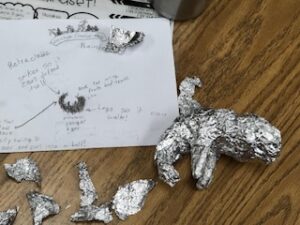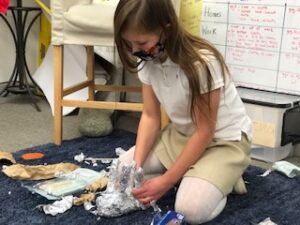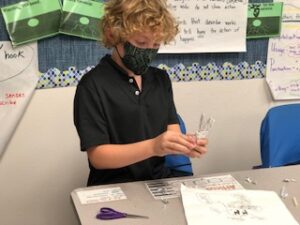This past week, fourth graders began a culminating project to tie up our science unit on animal adaptations. Over the course of the unit of study, we explored various systems in the human body and compared and contrasted them to those of other species. Through the use of handmade models and scientific questioning we explored and discovered adaptations that animals have to help them survive. We took this one step further and connected it across curriculum by discussing the different adaptations needed in the different climate zones and regions we were learning about in social studies.
Here at PNA, we strive to go beyond traditional schooling routines and use project based learning as much as possible. Project Based Learning (PBL) is a way to make learning relevant and engaging by using real world processes. At PNA we try to have students show their learning and skills in ways that are more about doing than just simply knowing. Which is why this opportunity to go through the steps of a PBL had to be taken. This PBL invited students to become creature creators, a real life profession. It allowed them to take the factual knowledge we gained during our studies and combine it with their own imaginations to create a brand new creature. Our Driving Question: “How can we, as creature designers, create a creature for a science fiction movie that will seem realistic?” Here is the task they were presented with:
You have been hired as a creature designer for the next Hollywood blockbuster movie! The movie involves visiting many different fantasy environments. The movie director wants you to create a realistic animal or plant for the scenes on one of these planets during the movie. You have been asked to learn about the fantasy planets, learn about one planet’s environment and habitat, and use your knowledge of animals’ and plants’ internal and external structures and adaptations to create a creature that could survive in the planet’s ecosystem. You will need to make your imaginary creature realistic so that movie goers will be able to imagine that the planet is real. Use all the knowledge you have been gathering about animals’ and plants’ structures.
Once you have created a scientific diagram and and a model your organism, you will deliver a presentation that explains your design and convinces the director that your creature should be built for the movie.
To start the process, students “explored” 4 different planets to learn about. Once they chose the planet they were most interested in, using what they learned about internal and external animal adaptations, they began to plan and sketch their new creature. Their scientific diagrams labeled the adaptations and their purposes. Next, when the design was complete, the building of the model began. Here’s where things got fun and messy and little perseverance was needed. Students often had to rethink their strategy for the build and even modify their initial plan. No matter how challenging it was they worked through it. A working buzz was floating around the room as students gave each other advice, assistance and encouragement. “Persevering is hard,” one student said. “My first way wasn’t working, I had to stop and think this through,” another commented. Finally, “Creating a new creature is tough!” one shared, while others responded – “Yes, but fun!”
When the final creatures are complete students will need to present their creature to the “director” to see if theirs will be in the next blockbuster hit!
TO BE CONTINUED…
